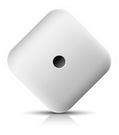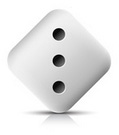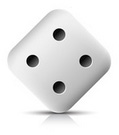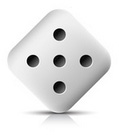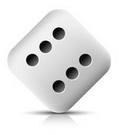Roll a D134 die
D134 Dice Roller
- D134 Dice Roller
- Rolls a D134 die
- Lets you roll multiple dice like 2 D134s, or 3 D134s. Add, remove or set numbers of dice to roll
- Combine with other types of dice (like D132 and D136) to throw and make a custom dice roll
Statistics of this Dice Roller
- RollD134
- Total Kinds of Dice1
- Total Dice1
- Minimum Sum1
- Maximum Sum134
- Lowest Dice Face1
- Highest Dice Face134
- Highest Dice Face of the Smallest Die134
-
D134
Total Possible Combinations 134
Number of combinations are calculated using the formula [ (134+1-1) choose (1) ]
You can try generating all the combinations using the following combination generator
All possible combinations of 1D134 -
D134
Total Possible Permutations 134
Number of permutations are calculated using the formula [ 134^1 ]
You can try generating all the permutations using the following permutations generator
All possible permutations of 1D134
Probabilities of this Dice Roller
D134
Probability of getting a 1
In technical terms this is equivalent of getting atleast one 1. This is close to 0.0075, about 0.75% percent.This is calculated by multiplying all the probabilities of not getting a 1 for each dice and then subtracting the answer from 1.
1 - (133/134)
Probability of not getting a 1
Probability of not getting any 1 is close to 0.99, about 99.25% percent.This is calculated by multiplying all the probabilities of not getting a 1 for each dice.
133/134
Probability of getting all 1's
Probability of getting all 1's is close to 0.0075, about 0.75% percent.
This is calculated by multiplying together all the probabilities of getting a 1 for each dice.
1/134
Probability of getting 1 1s
Probability of getting 1 1's is close to 0.0075, about 0.75% percent.
This is calculated by multiplying together all the probabilities of getting a 1 for each dice that has a 1.
1/134
Probability of getting a 134
In technical terms this is equivalent of getting atleast one 134. This is close to 0.0075, about 0.75% percent.This is calculated by multiplying all the probabilities of not getting a 134 for each dice and then subtracting the answer from 1.
1 - (133/134)
Probability of not getting a 134
Probability of not getting any 134 is close to 0.99, about 99.25% percent.This is calculated by multiplying all the probabilities of not getting a 134 for each dice.
133/134
Probability of getting all 134's
Probability of getting all 134's is close to 0.0075, about 0.75% percent.
This is calculated by multiplying together all the probabilities of getting a 134 for each dice.
1/134
Probability of getting 1 134s
Probability of getting 1 134's is close to 0.0075, about 0.75% percent.
This is calculated by multiplying together all the probabilities of getting a 134 for each dice that has a 134.
1/134
Javascript code to create this dice roller
// code to create a D134 dice roller
// define the range of numbers to pick from
var lowest = 1; // lowest possible side of the dice
var highest = 134; // highest possible side of the dice
var numbers_of_dice = 1; // how many dice to roll
var this_roll = []; // array to store the results of this roll
for (var j = 1; j <= numbers_of_dice; j++) {
// loop for the number of dice
// for each dice, generate a number between lowest and highest
var dice_face = Math.floor(Math.random() * (highest-lowest+1) + lowest);
this_roll.push(dice_face); //store this in the array
}
// print all the generated rolls
for (j = 0; j < this_roll.length; j++) {
// loop through the dice array
//print each dice roll value followed by a space
document.write(this_roll[j]);
document.write(" ");
}
/*
Sample output
*/
